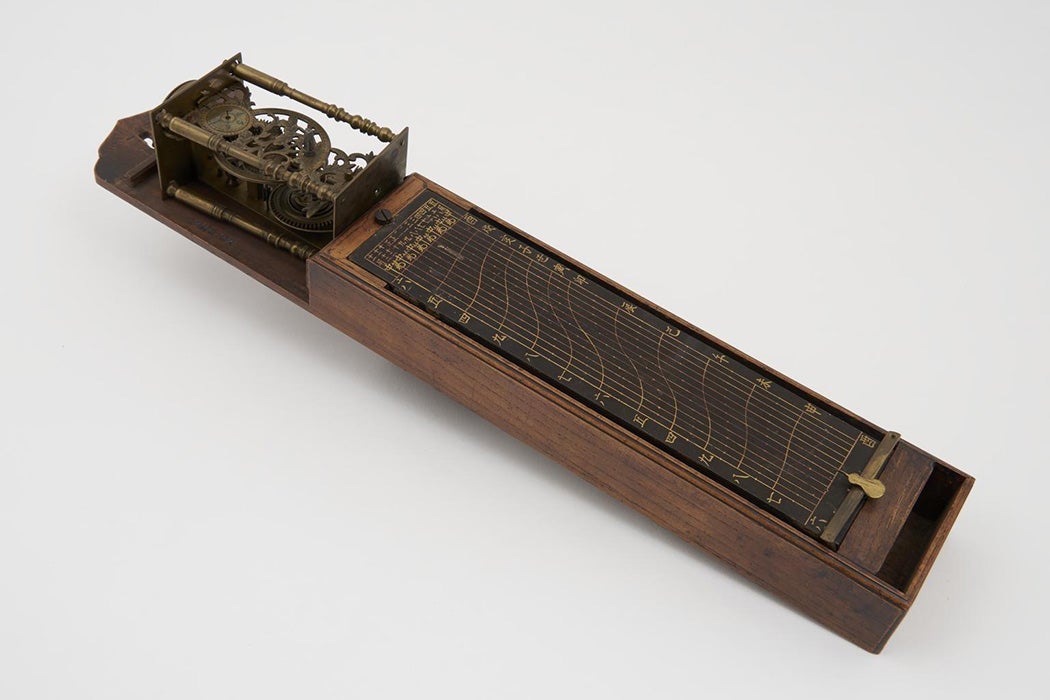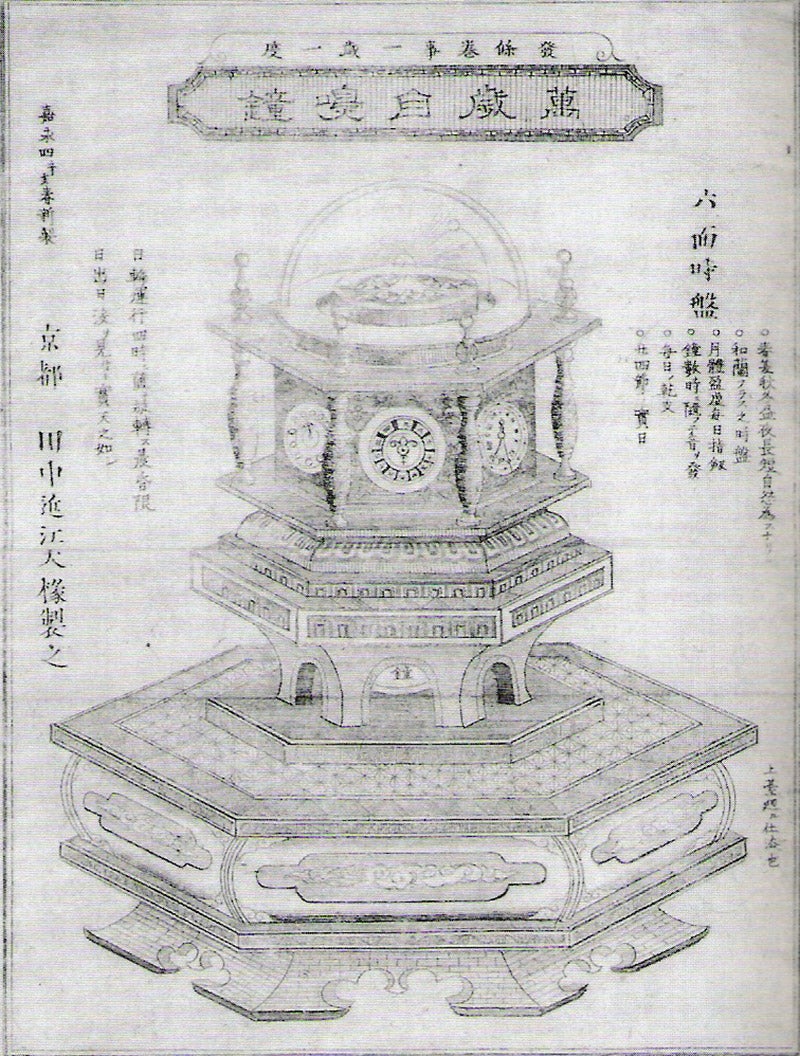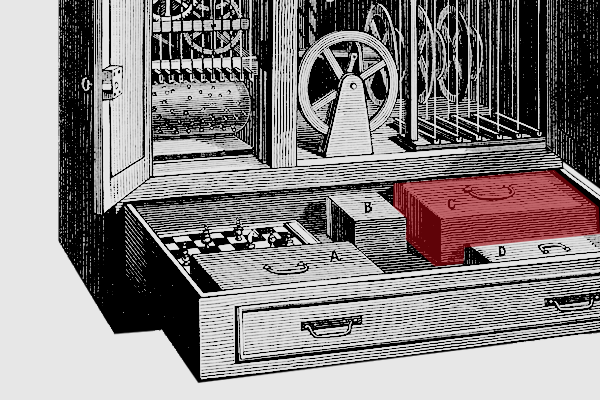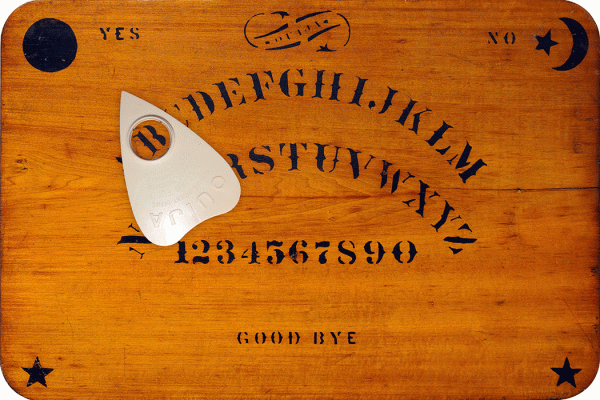A Tale of Two Times - Edo Japan Encounters the European Clock - JSTOR Daily
Published by Reblogs - Credits in Posts,
A Tale of Two Times: Edo Japan Encounters the European Clock
In country that followed a time-keeping system with variable hours, the fixed-hour clock of the Europeans had only symbolic value.

When the Jesuit Luís Fróis visited the Japanese lord Oda Nobunaga in 1569, he presented his host with a clock. Mechanical clocks were new to Japan, and this was a particularly exquisite example. Yet the feudal lord rejected the gift, saying "I do wish very much to have it. However, I do not want it because it would be wasted on me ( attr(href) )."
What did Nobunaga mean? To start, the clock may simply not have made any sense to him. Oda Nobunaga was raised in a culture that told time in a different way: the hours he lived by were variable rather than fixed. In Japan’s traditional timekeeping system, the day was divided into nighttime and daytime portions, which were each subdivided into six intervals. In summer, the night hours grew shorter, and the daylight ones grew longer; in winter, the pattern reversed.
This system may sound odd to modern ears, but at one time it was quite common. Unequal hours were used throughout medieval Europe , and similar systems were in place in ancient Egypt, Greece, and Rome. A timekeeping system that reflected the portion of the day that was lit by the Sun made sense in an agrarian society with little access to artificial light .
Still, variable hours weren’t very compatible with steady mechanical clocks. It was quite a challenge for people raised in this system to make sense of fixed hours. As Yulia Frumer explains ,
In the present day, the so-called "variable" hours of Edo Japan seem to be "changing" and unstable; but for the Edo period, Japanese Western hours seemed equally unstable. After all, Western hours were sometimes longer and sometimes shorter than the Japanese ones. Besides, in Edo Japan both the beginning and the end of day always occurred in the sixth hour; they were defined by this fact; akemutsu (the six of the dawn) and kuremutsu (the six of the dusk). But in the West, wrote an astonished Yanagawa Shunsan, "sometimes dawn is in the fifth hour, sometimes in the sixth, and the same with the dusk."
One contemporary Japanese account ( attr(href) ) referred to striking clocks as "a sounding bell that did not distinguish between the length of night and day in regulating the hours." In other words, the device’s most notable feature was that it was more or less useless for telling the time.
On the other hand, perhaps there was more to Oda Nobunaga’s refusal. He may have felt that there were strings attached to the gift. After all, the Jesuits were on tenuous footing in Japan. They’d only recently been allowed back into Kyoto after being expelled in 1564 by Emperor Ogimachi . They needed all the help they could get to smooth things over. Hence the lavish gifts: they were looking to make allies. The chance to see something exotic could open doors that would otherwise remain shut. At one point, Luís Fróis was prevented from seeing a local lord. But when he returned with his clock and offered to give a demonstration, the doors opened to him. Indeed, Fróis quickly found that the prospect of seeing a clock was one of the best enticements he could use to lure potential converts into church.

Meanwhile, the local lords were making their own use of the clocks Europeans had gifted them. Useless as they were for telling the time, they served perfectly as status symbols. A foreign clock was a sign that even people from faraway lands recognized your importance and authority. A clock was one of the gifts Toyotomi Hideyoshi received in a grand public parade in 1591, a visible demonstration to his vassals of how eager people around the world were to pay him their respects.
The illegibility of the clocks, however, didn’t last for long. Japanese artisans quickly developed a variety of ingenious methods for adapting fixed-rate mechanical clocks to a variable time system. One version added little moveable weights to the clock’s escapement, making it possible to adjust its speed. Others allowed the users to slide the hour markers around the face, setting them appropriately for the season. And then there were the long, skinny clocks that featured graph-like diagrams embedded in the front. A marker moved up and down the side, tracing through the diagram to land on the correct time.

Perhaps the most sophisticated example of Japanese clockmaking was Tanaka Hisashige’s Myriad Year Clock ( attr(href) ), completed in 1851. Now held in Tokyo’s National Museum of Nature and Science, its six faces not only tell the time in Japanese variable hours and European fixed ones, but also track the periods of the Japanese solar year, the days of the week, the date in the Chinese calendar, and the phases of the moon. The hour markers for the Japanese system are self-adjusting, moving apart or crowding together depending on the time of year. Beneath a glass globe at the top, two small spheres representing the Sun and Moon revolve above a map of Japan.
In 1873, just two decades after Tanaka created his clock, the traditional Japanese timekeeping method was abolished and replaced with European-style fixed hours, putting an end to this unique local industry.
Please contact us. ( attr(href) )

Resources
JSTOR is a digital library for scholars, researchers, and students. JSTOR Daily readers can access the original research behind our articles for free on JSTOR.
Join Our Newsletter
Get your fix of JSTOR Daily’s best stories in your inbox each Thursday.
Privacy Policy ( attr(href) ) Contact Us ( attr(href) )
You may unsubscribe at any time by clicking on the provided link on any marketing message.
Cabinet of Curiosities ( attr(href) )
Read this next
Keeping Time with Incense Clocks ( attr(href) )
More Stories
Walking Streetlamps for Hire in Seventeenth-Century London ( attr(href) )
Halloween: A Mystic and Eerie Significance ( attr(href) )
Teaching LGBTQ+ History: Queer Women’s Experiences in Prison ( attr(href) )
How to Use a Ouija Board ( attr(href) )
Support JSTOR Daily
About Us
JSTOR Daily provides context for current events using scholarship found in JSTOR, a digital library of academic journals, books, and other material. We publish articles grounded in peer-reviewed research and provide free access to that research for all of our readers.
- Contact The Editors ( attr(href) )
- Masthead ( attr(href) )
- Newsletters ( attr(href) )
- About Us ( attr(href) )
- Submission Guidelines ( attr(href) )
- RSS ( attr(href) )
- About the American Prison Newspapers Collection ( attr(href) )
- Submissions: American Prison Newspapers Collection ( attr(href) )
- Support JSTOR Daily ( attr(href) )
 ( attr(href) )
( attr(href) )
JSTOR is part of ITHAKA, a not-for-profit organization helping the academic community use digital technologies to preserve the scholarly record and to advance research and teaching in sustainable ways.
©2022 ITHAKA. All Rights Reserved. JSTOR®, the JSTOR logo, and ITHAKA® are registered trademarks of ITHAKA.







